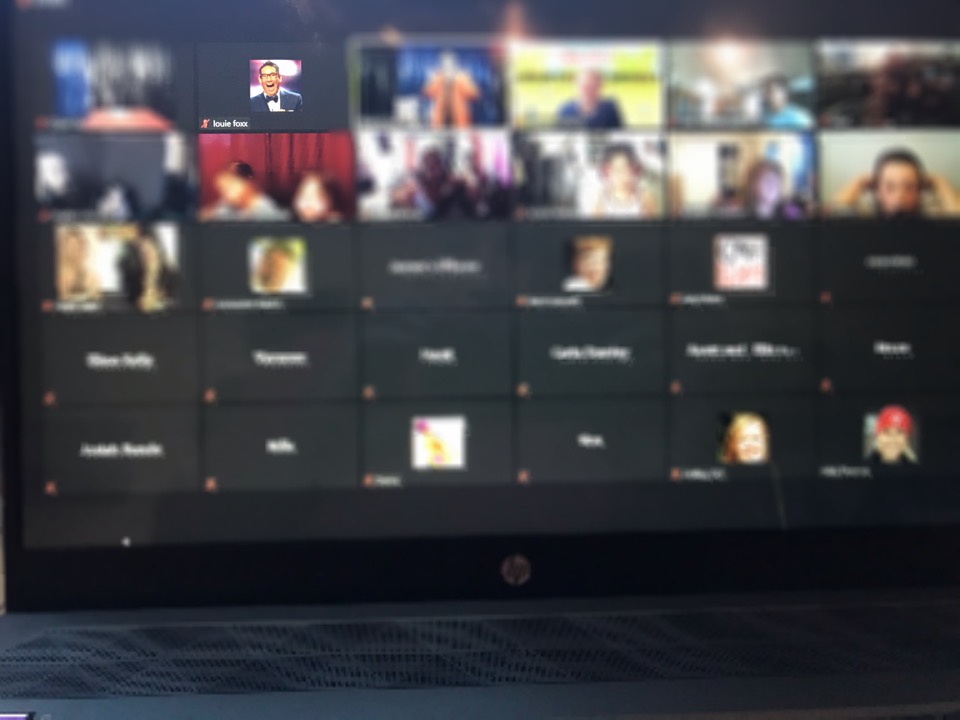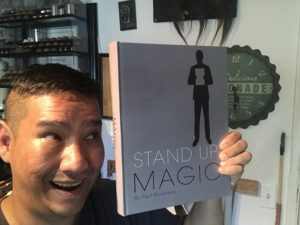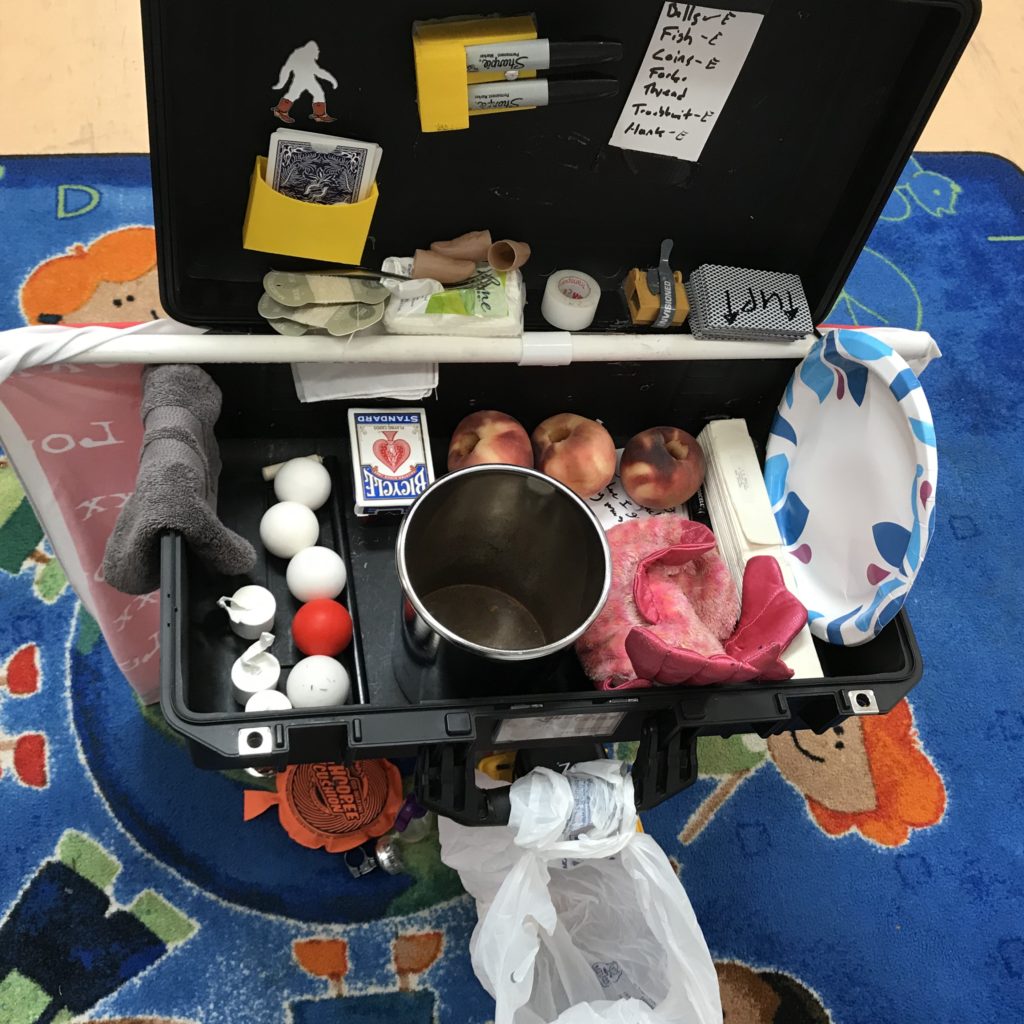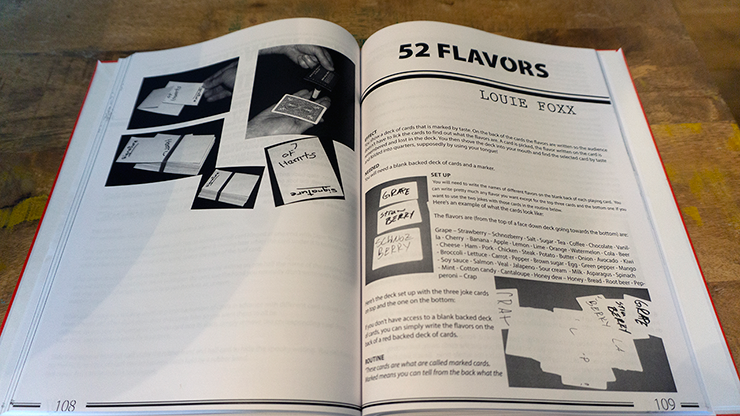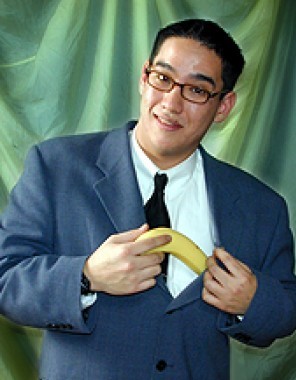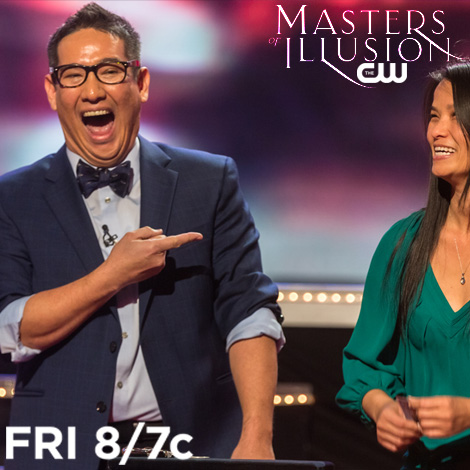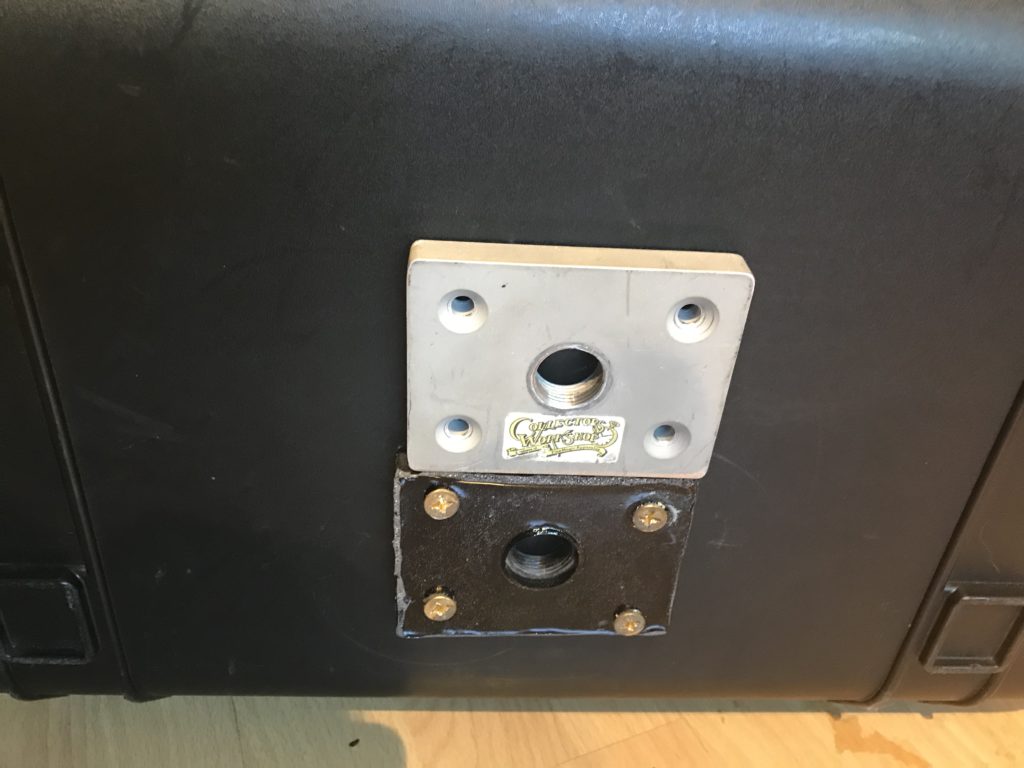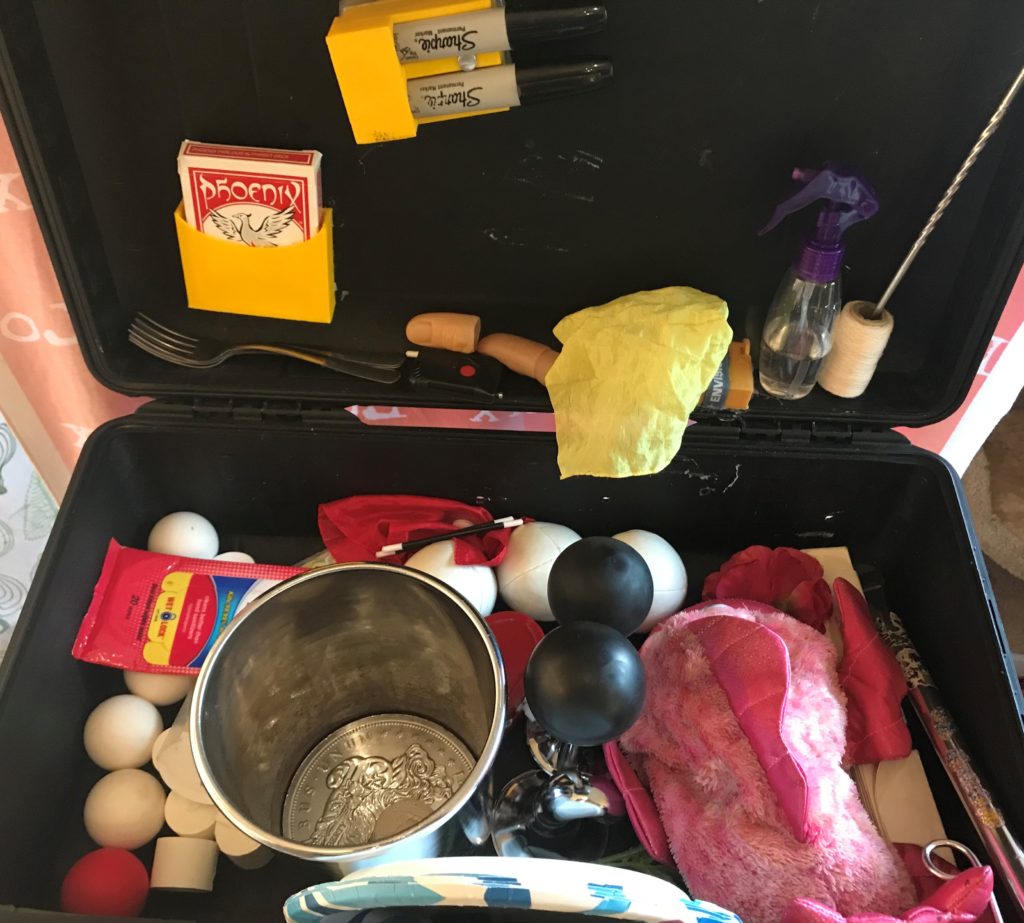One thing I love to do is talk magic and share what I know about it. Last week I got to do an online lecture for the Vancouver Magic Circle and it was a ton of fun! My lecture isn’t just about the tricks, while I do teach some interesting tricks, it’s about how I created them and how you can create your own tricks.
Here’s a side view of the lecture, I’ve got my main working table on right side of the picture and then the table that holds my props that aren’t currently being used. The prop table is out of the camera’s view.
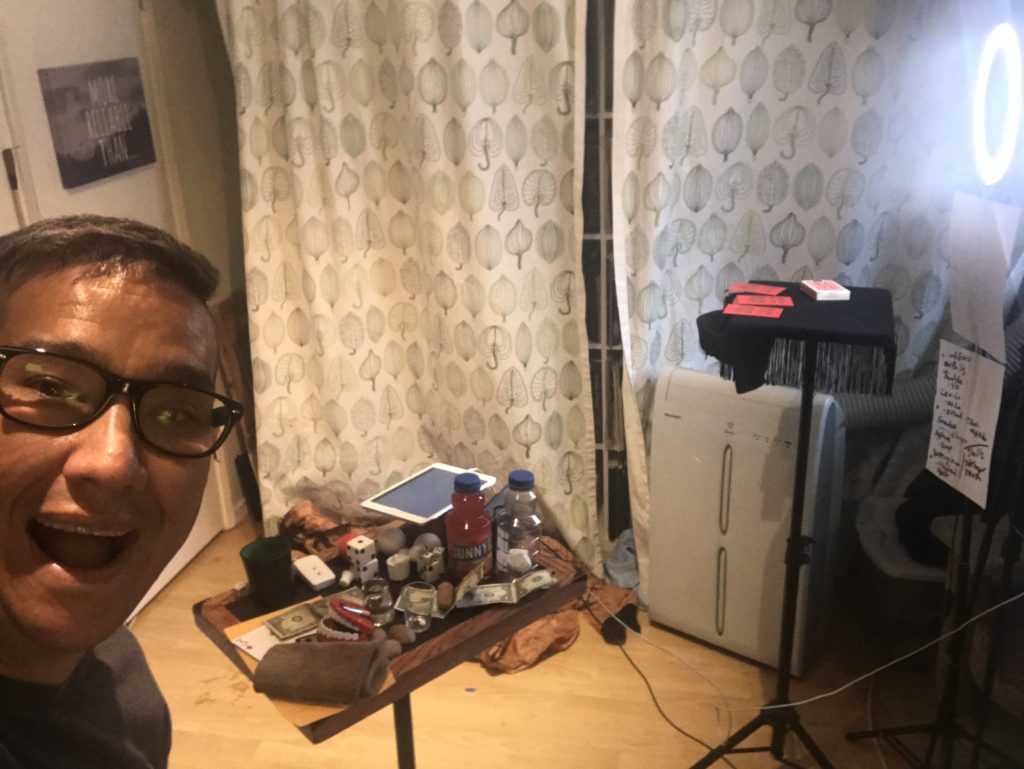
You’ll also notice that taped to the light are some pieces of paper. One is for a trick that I teach and the other are my lecture notes. Here’s what I planned to cover in the lecture:
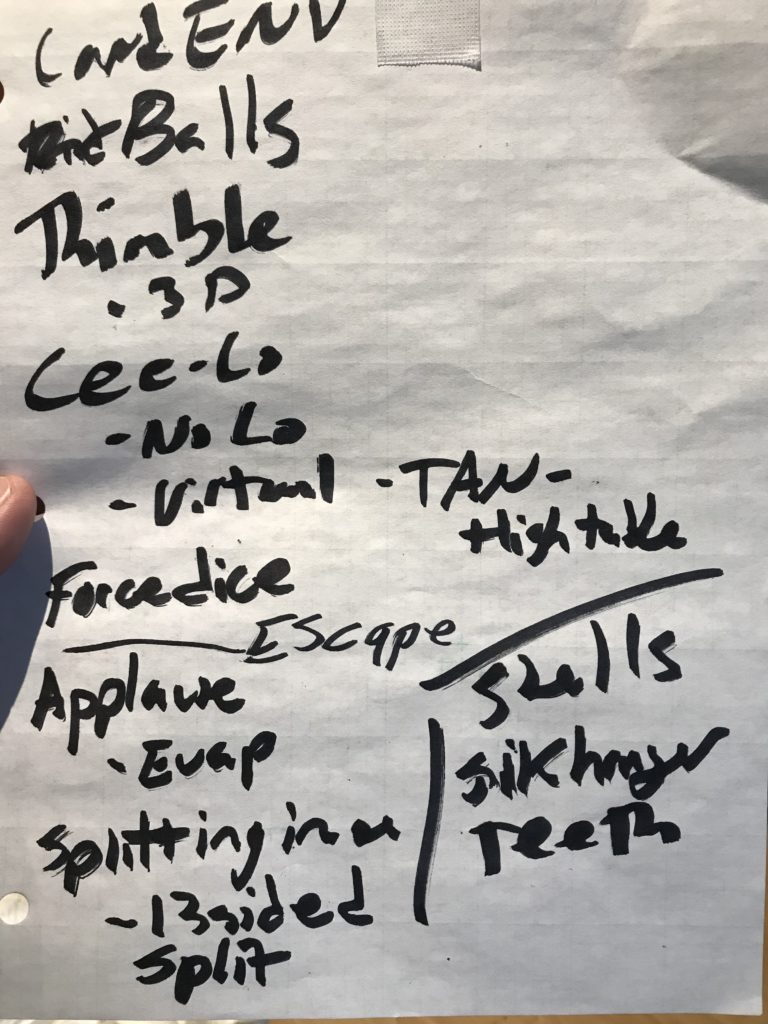
We got to pretty much everything I had planned! When I lecture of do a show, I always use a hand written (in sharpie) set list. It really helps keep me on track and from forgetting things. Using a set list also helps me during the show make decisions about skipping bits and reminding me of new jokes or bits to try out.
If you don’t use a set let, you should try one out!

